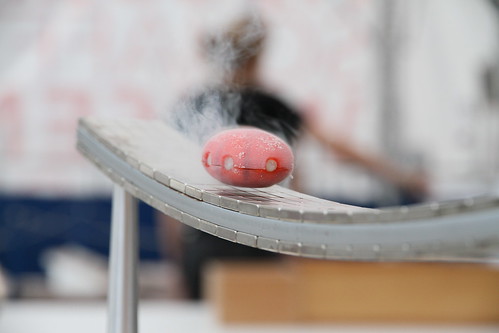
 )
)Over the past couple of weeks, we’ve explored the question of just how long it takes to earn a Nobel prize (and the implications for representation). This week I want to take up a similar theme from a different angle. One of the big headlines recently was the announcement of a room temperature superconductor (a cool room, but within the range of normal HVAC). Superconductors transmit electricity with minimal resistance, which means little energy is lost to heat and efficiency is thus high. Superconductors can also be used to generate powerful magnetic fields like the sort in MRI machines. Current commercial superconductors require very cold temperatures–liquid helium cold–which adds to the cost of an MRI and makes them dependent on our limited helium resources. A room temperature superconductor could simplify MRI technology and remove that dependency, as well as improving efficiency of power transmission and yielding other significant benefits.
But don’t give away your liquid helium reserves just yet. The new material does achieve superconductivity at feasible temperatures, but only at extreme, center-of-the-Earth level pressure that likely is impractical for commercial applications. This is still a significant milestone; at the same time, it is unclear how much closer we are to the long-promised benefits of room temperature superconducting. I remember reading pop-sci articles on the topic as a teen in the 1990s, and the theory leading to this particular breakthrough goes back to the 1960s. I’m sure if I were in one of the relevant physics fields, I’d have a better sense of the progress that’s been made, what the next steps are, and whether they represent predictable increments or require further unplannable innovations. But as an educated layperson, I’m left with a more vague sense of a 30+ year project extending indefinitely into the future.
I have a similar relationship to fusion research, which got some buzz a few weeks ago from a group of publications presenting recent progress. Those results may not present as layperson-friendly a landmark as room temperature superconductivity, but they were met with some enthusiasm and a similar list of caveats and gaps between the current state and the hoped-for applications. Efforts to employ fusion for generating electricity likewise go back decades and have been staples of pop-sci writing, not least because of the cold fusion controversy of 1989. We are clearly closer to commercialization than we were 30 years ago, but since large-scale fusion has always been at least a few years away all through that time, it’s hard to gauge exactly how much closer.
The two topics have more connecting them than just long development cycles. The leading fusion reactor candidates use strong magnetic fields to contain the fusion reaction and its high temperatures. (Cold fusion has been a fringe pursuit since the 1990s; most research focuses on making high temperature fusion yield a net gain of energy.) Superconducting materials are key to those magnetic fields, so improvements with superconductors could have benefits for fusion. And a high yield fusion reactor could be a good power source for the kind of highly efficient long range power lines a room temperature superconductor might provide.
Still, even with that potential for synergistic innovation, we will likely have more years of stories about the promise of these technologies before we see actual fruit. When you are not engaged in the details, I think it is easy for healthy skepticism to turn into cynicism. The differences are in the details; at a high level, it can look like the same story year after year. Like a bacterium in a shallow gradient, we might not be able to tell if we’re headed in the direction. For me, it was helpful to go back and review the history a bit. Those stories in the 1990s were related to ceramic materials that raised the critical temperature over 100 degrees K, a significant breakthrough in its own right. Milestones like that help to make it clear that progress has been made, even if we’re not at the final destination and even if the path isn’t a straight line.
What strategies help you to avoid becoming cynical about long term projects that develop slowly?
Andy has worn many hats in his life. He knows this is a dreadfully clichéd notion, but since it is also literally true he uses it anyway. Among his current metaphorical hats: husband of one wife, father of two teenagers, reader of science fiction and science fact, enthusiast of contemporary symphonic music, and chief science officer. Previous metaphorical hats include: comp bio postdoc, molecular biology grad student, InterVarsity chapter president (that one came with a literal hat), music store clerk, house painter, and mosquito trapper. Among his more unique literal hats: British bobby, captain’s hats (of varying levels of authenticity) of several specific vessels, a deerstalker from 221B Baker St, and a railroad engineer’s cap. His monthly Science in Review is drawn from his weekly Science Corner posts — Wednesdays, 8am (Eastern) on the Emerging Scholars Network Blog. His book Faith across the Multiverse is available from Hendrickson.

Leave a Reply